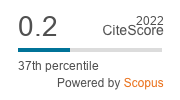The Ambiguous Pictures in the Theory of Language in Wittgenstein’s Tractatus
Keywords:
Wittgenstein, Tractatus, Picture, Correspondence, Ambiguity, Reality, Language, FactAbstract
This paper explores the ambiguities in Wittgenstein’s Tractatus Logico-Philosophicus that result from the conceptualization of the picture as a middle term in between the translations between language and the world. The picture is an odd inclusion that cannot help suggesting the work of the cognitive mind, odd because the analytic tendency in the Tractatus is to foreground the logical structure of the correspondences between language and the world that should not necessitate the mediation of the picturing mind. In my close reading of the statements in the Tractatus that refer to the picture, I show how ‘the picture theory of language’ cannot produce a plausible account of the truth or reality mainly because the concept of the picture in the Tractatus is not developed adequately and therefore cannot explain how linguistic propositions can ever correspond to any reality. In following Wittgenstein’s thinking on the Tractatus picture, I show that this inability results from the theory itself since it does not allow the picture and hence the picturing mind to deal with any sense of ambiguity and to exist in a sufficiently independent way from the facts of language and the world.



